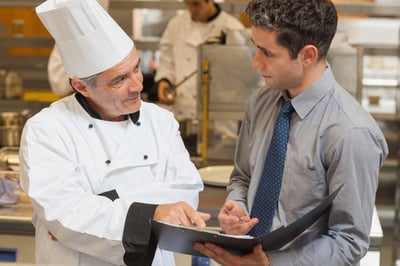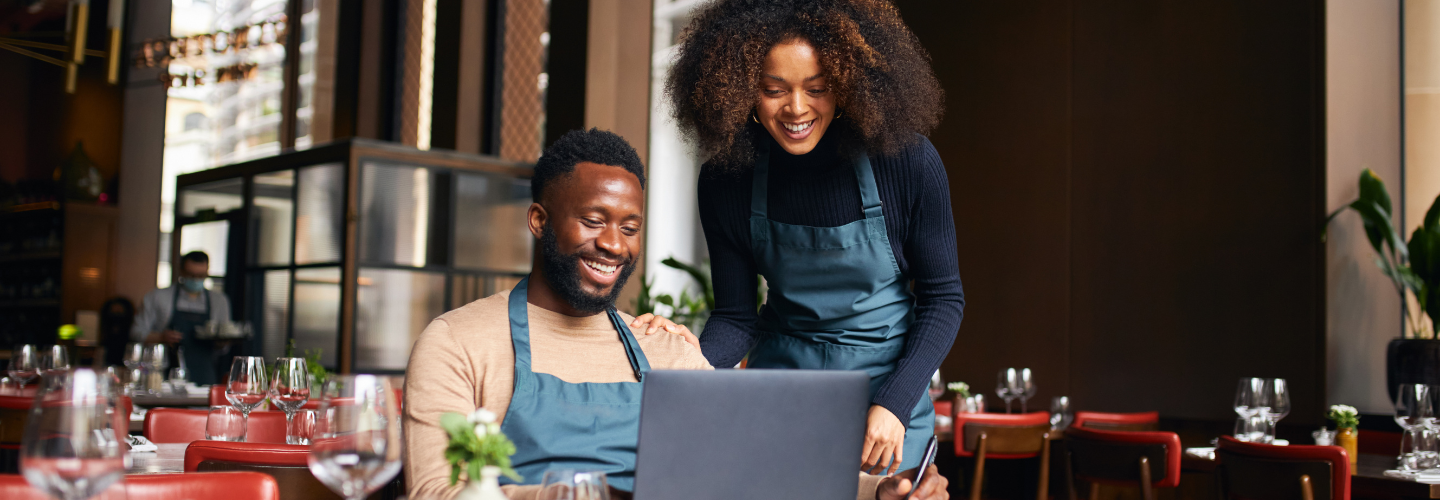This article was originally published by FSR Magazine
For most of its 40-year history, First Watch relied on paper checks to move orders in and out of kitchens. Up until a few years ago, servers wrote out orders on green tickets. In the back of house, the most senior person would often manage those tickets, calling orders to various stations. It required careful orchestration as the person at the helm measured the various cook times for eggs, meats, and pancakes.
In the best cases, all items hit the plating station at the same time. “It took a lot of skill, and a very skillful helmer to make that happen,” says Dan Jones, chief operations officer at First Watch, which boasts nearly 500 stores.
But with a kitchen display system, or KDS, the pressure is off the employee helming the kitchen. Instead, the technology tells each station what and when to fire—automatically synchronizing various cooking times to ensure an entire order is ready at the same time. After testing KDS in five restaurants in late 2021, the breakfast and lunch chain began implementing the technology across all its company-owned stores last year.
“KDS is part of a larger focus for First Watch to support our operators, to make their jobs easier,” Jones says. “And this was one of those things that allows us to train a little more effectively, bring new team members up to speed faster, and provide a little more consistency in the kitchen.”
While such systems have been around for years, operators have increasingly adopted KDS to alleviate growing labor pressure, speed up kitchens, and streamline the operations between the front of the house, kitchens, and online and delivery platforms.
At First Watch, where the average cook touts seven years with the brand, some initially balked at the change. But it didn’t take long for crews to embrace the technology—particularly true for cooks who had already worked in KDS kitchens.
“Change is hard,” Jones says. “[But] I think that everyone likes the new system better after they’ve used it—for some, it’s only a shift, for some it’s a week—they understand the benefits of it.” Since coming to the brand in the fall of 2021, Jones says he’s been to nearly 300 First Watch stores, most of which have implemented KDS. Not once has anyone requested reverting back to the old call system. While the brand is still measuring the overall impact of the new system on ticket times, Jones says early data show important gains that should help with both customer satisfaction and staff retention.
“We’re still evaluating and learning how to use that,” he says. “I would say early read is it makes it easier for our kitchens to execute. So, we know that’s a win for us. And that’s going to pay off long term.”
KDS is a key part of Empower Delivery’s value proposition. A spin-off of ClusterTruck, the vertically integrated virtual restaurant, Empower Delivery is a software company that powers delivery-centric restaurants.
“KDS is critical to making the system work,” CEO Meredith Sandland says. “And that’s because it’s the KDS that is communicating to the different workers at the different stations when to do what.”
Sandland describes Empower Delivery’s software as holistic. While taking orders from customers, managing kitchen stations and routing drivers, the software remains constantly resource-aware.
“So, it integrates the consumer journey, product journey and the logistics journey all into one system. As a result, everything is timed to perfection, meaning that there’s no latency in the system,” she says. “There’s higher utilization. As a result, it’s more profitable, it’s faster, the consumer gets a fresher, hotter product. No one’s ever waiting.”
In practice, the software does what other KDS systems do: it tells the kitchen to fire a burger a few minutes before building items that take less time like sandwiches or salads. But it also keeps constant track of delivery driver availability. That means if no drivers are expected to be available soon, orders won’t appear in the queue. That reduces stress in kitchens—a lesson first learned at ClusterTruck. Each day, the virtual brand’s downtown Indianapolis kitchen pumps out more than 1,000 orders, including many large group orders.
“You would think oh my gosh, it would be crazy, right? They’d be like shouting at each other and dropping things and wondering where stuff was all the time. And it’s not. It’s absolutely silent, super calm. Everyone’s just jamming away doing their thing,” Sandland says. “And the reason is because they’re only being asked to do the immediate next thing that needs to get done and so there’s no stress of like a backup that they can’t do anything about.”
Over time, the software can also learn about variances across locations, which may have different staffing abilities and physical layouts. If pizzas, for instance, take longer in some kitchens, the software can adjust accordingly. Sundland says the software was built with an eye toward a more automated future.
“You can imagine that over time, while today that KDS is telling a worker what to do at a station, it becomes now much easier for the software system to tell a machine what to do at a station,” she says.
Zach Goldstein views ever-advancing kitchen display systems as just part of the restaurant technology evolution. The CEO and founder of loyalty technology Thanx, Goldstein says the industry’s growing share of digital orders puts less importance on traditional point of sale systems.
“I think what we’re seeing is a broader trend,” he says. “That is the declining criticality of the point of sale, and new ways for restaurants to operate. And if you stop treating the point of sale as the central operation hub of a restaurant and instead treat digital and, frankly, the customer as the center, you start with a world that starts making other elements of the restaurant technology more and more important.”
Smarter kitchen display systems even incorporate loyalty. They can notify line cooks of past diner preferences and food allergies. Or they can simply notify kitchens that they’re preparing food for a top customer, not unlike a hotel loyalty program can notify a front desk clerk.
“How would it change the experience in the kitchen if you know that this person is one of your top 1 percent customers?” Goldstein says. “Presumably, you give it a little extra care, you make sure that the presentation was perfect, you ensure that you are firing it at the exact right time, so that all the dishes are at the same readiness. There are things you could do differently with that information and historically, that information does not make it to the kitchen.”
These new technologies span the front and back of house, Goldestein says, and put the customer at the center of a restaurant operation.
“You’re really putting the customer at the center of your restaurant as opposed to the point of sale at the center of your restaurant,” he says. “I think that’s why KDS [models] are kind of seeing more attention now.”




